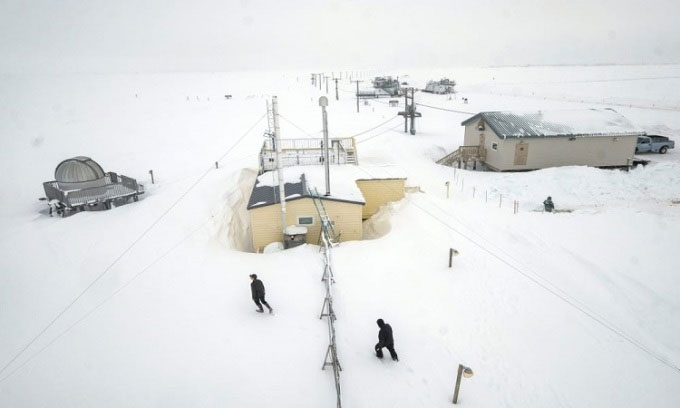This week, residents of the city of Utqiagvik will experience “polar night,” lasting 66 days without sunlight.
Utqiagvik is the northernmost city in the United States, home to over 4,000 people. Located in Alaska, the city has several nicknames, including “the roof of the world” and “the starting point of climate change.” Starting this week, the city will undergo “polar night” for a duration of 66 days. Without sunlight, temperatures here will drop significantly. Utqiagvik experiences temperatures below 0 degrees Celsius for 160 days of the year. Accordingly, the next time the sun will rise above the horizon is on January 22, 2022.

The city of Utqiagvik is located in Alaska. (Photo: Bonnie Jo Mount/The Washington Post)
Residents of Utqiagvik continue their daily lives without sunlight. “It’s dark when you get home at noon. You turn on your headlights at noon to drive home. It’s a bit different for most people in the other 48 states of the U.S.” Myron McCumber, an innkeeper in the city, shared.
The majority of residents in the North Slope region are Indigenous Iñupiat, who have lived in the Arctic for thousands of years. Historically, the Iñupiat survived the harsh climate by hunting whales, caribou, walrus, seals, and birds. Due to the high cost of vegetables, hunting remains a vital part of life in Utqiagvik. Every spring, the local community gathers to celebrate a successful whale hunting season. However, climate change is making hunting more challenging.
In 2017, temperatures in Utqiagvik rose so rapidly that an algorithm assessing data deemed it “unreal” and removed it from the government database. “With less sea ice, we no longer encounter seals, walruses, or polar bears. Climate change is altering the migration patterns of animals and birds, all of which significantly impacts hunters,” Myron said.
The majority of residents in Utqiagvik live apart from the commercialization found in the other 48 states. The entire city has 4,500 residents but only five restaurants.

















































